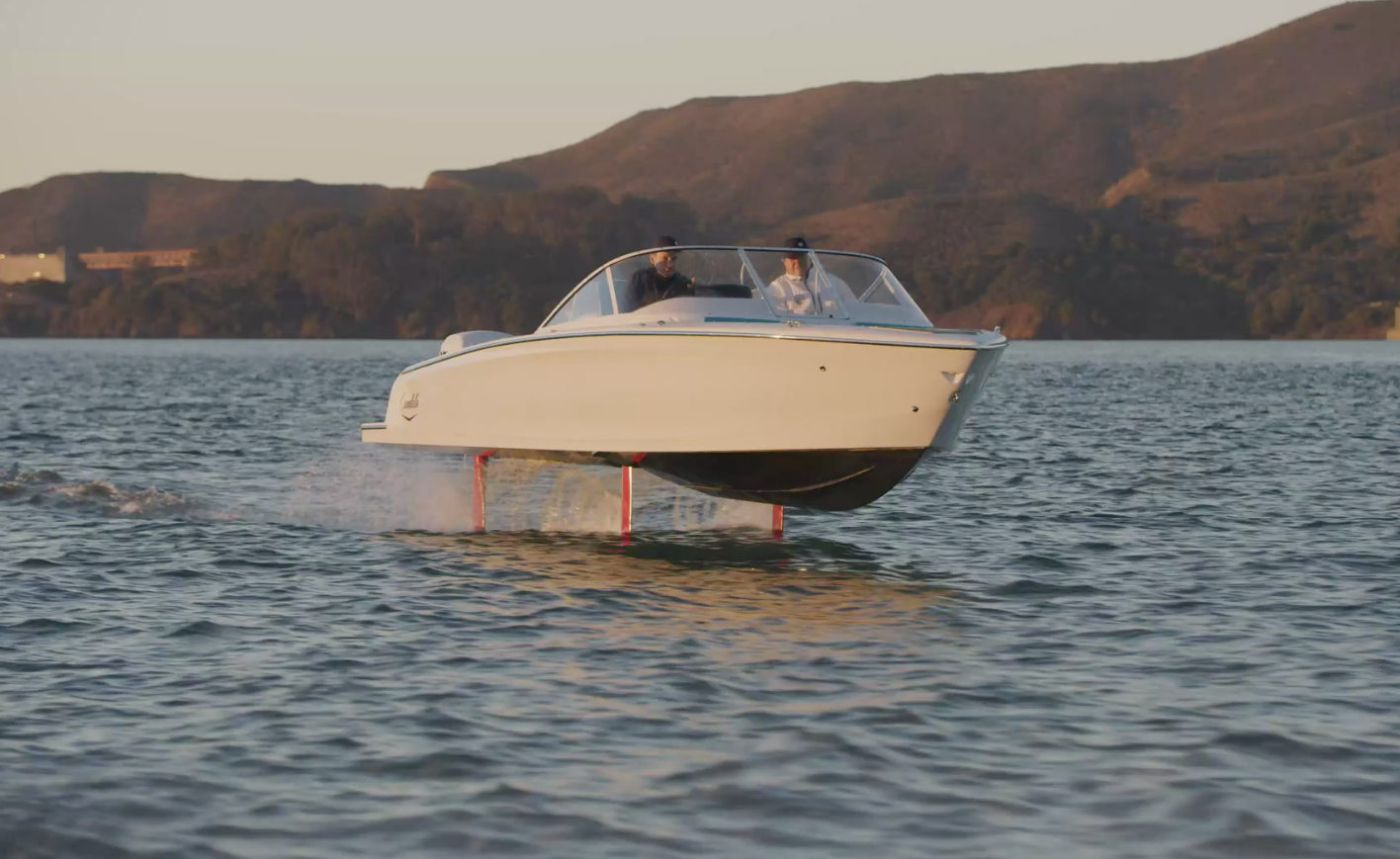Can electric car batteries turn new generation of hydrofoil boats into ‘EVs of the seas’?
Emissions-free vessel is ‘400% more efficient’ than any other powerboat on the market, company claims
Your support helps us to tell the story
From reproductive rights to climate change to Big Tech, The Independent is on the ground when the story is developing. Whether it's investigating the financials of Elon Musk's pro-Trump PAC or producing our latest documentary, 'The A Word', which shines a light on the American women fighting for reproductive rights, we know how important it is to parse out the facts from the messaging.
At such a critical moment in US history, we need reporters on the ground. Your donation allows us to keep sending journalists to speak to both sides of the story.
The Independent is trusted by Americans across the entire political spectrum. And unlike many other quality news outlets, we choose not to lock Americans out of our reporting and analysis with paywalls. We believe quality journalism should be available to everyone, paid for by those who can afford it.
Your support makes all the difference.Two Swedish companies – one specialising in high-performance electric cars, and the other in hydrofoil speedboats – are collaborating to build a new generation of efficient speedboats which they hope will fuel a "mass market adoption" of electric boats.
Candela, which makes high-end hydrofoil boats whose hulls’ appear to "fly" high over the surface of the water, is partnering with Polestar, an electric performance car company which specialised in batteries and charging technology.
Due to the huge reduction in friction caused by the boats riding up out of the water, while the "wings" of the hydrofoil remain submerged, they use up to 80 per cent less energy at high speeds compared to traditional motorboats.
"A conventional 28-foot powerboat uses 15 times more energy than a standard family car per kilometre," Mikael Mahlberg from Candela told The Independent.
"The reason is that boats plough their way through the water, using huge amounts of energy to displace water – which is evident from the huge wake they produce."
But the hydrofoil boats hugely reduce the energy demands, while also creating almost no wake behind them as they skate over the surface, and create far less noise.
"Since we’re now powering our boats with Polestar packs, I’d say [the boats are] the sports EVs of the sea. The Candela C-8 with a Polestar pack will have at least two to three times the range of any other electric speedboat on the market at high speed – at over 20 knots."
The computer technology – similar to that which steadies F-35 military aircraft during flight, and is also used in drones – regulates the hydrofoils 100 times per second to ensure a steady flight in waves and winds.
"You can’t get seasick on board", Mr Mahlberg said.
"In order to get people to transition to electric boats, you can’t make an electric boat that has worse performance or is on par with ICE (internal combustion engine) competitors – you must make one that is vastly better," he said.

As well as creating high-performance small boats, Candela is also venturing into electric ferries.
The first will be a 30-person water shuttle which has been commissioned by the city of Stockholm and will begin taking passengers next year.
Mr Mahlberg said at its launch that the ferry will not only be the fastest passenger ferry in Stockholm and the most efficient, but also the fastest electric passenger ferry in the world.
Speaking about the collaboration with Polestar, Gustav Hasselskog, the chief executive of Candela, said: “While electrification of cars has come a long way in the last few years, the marine sector has fallen behind. Marrying our efficient hydrofoil technology to high-capacity batteries from Polestar means we can speed up the mass market adoption of electric boats together.”
Thomas Ingenlath, chief executive of Polestar said the collaboration was "awesome".
He said: “I am fascinated by the way Candela’s boats glide elegantly and efficiently through, or better, over the water – amazing proof of the great aesthetics and experiences modern, sustainable technology can create.
"As a battery supplier to Candela, we can help drive the transition to cleaner oceans and lakes, and electrify waterborne transport.”




Join our commenting forum
Join thought-provoking conversations, follow other Independent readers and see their replies
Comments